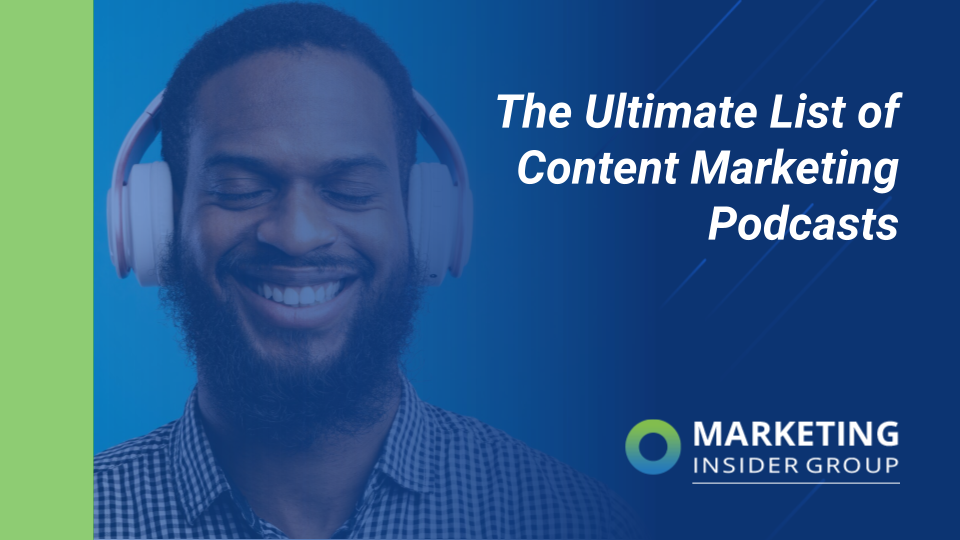
Podcasts have exploded in popularity over the past decade. Today, people turn to them for everything from daily news updates to murder mysteries to sports commentary to personal and professional advice and more. There’s truly a podcast for everyone and every mood.
Marketers are no exception, and through the years I’ve been lucky enough to be a guest on some really awesome content marketing podcasts. The list that follows is a collection of some of my favorites. On this list you’ll find shows that provide valuable insight on modern content marketing strategies, plus innovative and actionable tips you can implement at your company right away.
Happy listening!
Marketing Smarts by MarketingProfs
What it’s about: The MarketingProfs blog is a go-to resource for marketers looking for helpful tips and insights. Their podcast, Marketing Smarts, provides an awesome complement to their blog in the form of interviews with marketing who can give actionable advice to improve your strategies and boost your results.
Why we love it: MarketingProfs releases a new Marketing Smarts episode every week, meaning you can browse their library for just about any marketing topic. Their interviews feature a diverse set of professionals with backgrounds in different industries, types of companies, and marketing specialties.
Episode(s) to check out: I enjoyed spending time on the Marketing Smarts podcast talking about a few of my favorite topics: content marketing, employee advocacy, and future marketing trends.
Listen here: Content Marketing, Employee Advocacy, and the Future of B2B: Michael Brenner on Marketing Smarts
Sound bite: “I want to talk about a reset. Let’s remember what content marketing really is, and let’s reframe it as the future of marketing. Because the alternative is a death spiral into oblivion for a lot of marketers.”
QuietLight Podcast
What it’s about: QuietLight is a broker for SaaS and ecommerce companies. Their podcast provides insight and resources for buying and selling these types of businesses.
Why we love it: QuietLight’s podcast covers a wide range of topics, and every episode focuses on actionable tips that you can apply in the real world. If you’re an entrepreneur by nature or look for ways to be more entrepreneurial, this podcast is a must-listen for you.
Episode(s) to check out: Marketing is one of the focus areas covered in QuietLight podcasts. I had the chance to be a guest on a recent episode and talk about cutting paid advertising costs to boost revenue.
Sound bite: “Paid media is only going to get more and more competitive, whereas organic traffic is evergreen. And if you can get to the top of the rankings, it’s work that you did in the past that’s [paying off] today versus media money you spent yesterday.”
Bright Ideas
What it’s about: The Bright Ideas Podcast by Trent Dyrsmid can help you scale your business with better systems and processes — including as it relates to marketing.
Why we love it: It was a bummer to hear that the Bright Ideas podcast was coming to an end a few months ago after an awesome 12-year run. The good news is that you can still access the library of episodes, where Trent covers tons of marketing- and business-related topics featuring guests with expertise on each one.
Episode(s) to check out: I’m fortunate that I got to talk with Trent on the Bright Ideas podcast in mid-2021, where we did a consult (of sorts) right on the podcast to talk about how content marketing could impact Trent’s business.
Listen Here: How to 2-3X Organic Traffic Without a Six Figure Budget
Sound bite: “When we see something that generally speaks to the concerns that we have, the things that keep us up at night, that’s when we engage.”
Influencer Blueprint Show by Credit Suite
What it’s about: Credit Suite provides loans and credit for small businesses. Their podcast is one of many resources they offer professionals, and it features industry influencers who share their insights from firsthand experience.
Why we love it: The niche topics! You’ll find everything on the Influencer Blueprint Show from how to target the right clients to scaling your business with social media to raising chickens for fresh produce (you read that right). But don’t worry, there is no shortage of marketing-related topics.
Episode(s) to check out: I got a chance to be on the Influencer Blueprint Show to talk about one of the biggest (and often underleveraged) benefits of content marketing: its compounding effect.
Sound bite: “Advertising tries to interrupt people . . . [but] in a television show, on a radio show, or in a magazine that you’re reading, you’re not reading it or listening to it or watching it for the ads, you’re watching it for the actual content. And so really effective marketing is the content, not the interruption.”
Predictable B2B Success Podcast by Sproutworth
What it’s about: The Predictable B2B Success Podcast helps business owners and marketing and sales execs achieve predictable growth by expanding their influence. Every episode features a founder, executive, or thought leader in the B2B space.
Why we love it: This podcast deep-dives into marketing and sales topics from a leadership perspective. If you’re really looking to affect strategy from what you learn, this podcast is a good choice.
Episode(s) to check out: I recently got to talk about building customer relationships on the Predictable B2B Success podcast — something every business should consider foundational to their marketing strategy.
Sound bite: “Just look at what your customers are trying to solve, provide answers, expertise, thought leadership and help to those customers around their biggest challenges and you earn the right to then present the kinds of solutions you want to sell.”
Listen here: The Importance of Building Customer Relationships: 11 Ways to Build Them
The Marketing Book Podcast by Sales Artillery
What it’s about: On the weekly Marketing Book Podcast (episode released every Friday), host Doug Burdett interviews authors of books on modern marketing and sales trends.
Why we love it: The podcast provides first hand insight from industry thought leaders as they expand on and answer questions about the ideas shared in their books.
Episode(s) to check out: I was lucky to be invited twice to The Marketing Book Podcast to talk about The Content Formula and Mean People Suck with Doug.
Listen Here:
The Marketing Book Podcast: The Content Formula
The Marketing Book Podcast: Mean People Suck
Sound bite: “You don’t have to be the CEO to drive change in your organization or to feel like you’re creating impact in your job. You can be at any level — if you put the customer at the center and you have the courage to push back on bad ideas.”
Marketing Over Coffee
What it’s about: Marketing Over Coffee is hosted by marketing gurus John J. Wall and Christopher S. Penn. It discusses topics related to both new and classic marketing.
Why we love it: Every episode is like a marketing TED talk. The guests have unique expertise and every topic covers cutting-edge ideas or new takes on old ones. If you’re looking to expand your marketing knowledge and perspective, this is a must-listen for you.
Episode(s) to check out: I got to talk to John about the inspiration behind Mean People Suck in 2019.
Listen Here: Michael Brenner on Mean People Suck
Sound Bite: “When you have empathy for your employees, for your colleagues, for your team — and you put the customer at the center of everything you do — you can really generate the results that your organization wants.”
A Shark’s Perspective Marketing Podcast
What it’s about: A Shark’s Perspective focuses on continual curiosity about the consumer and how they perceive brands through marketing, advertising, and the customer experience.
Why we love it: The show helps listeners challenge their assumptions about how marketing tactics, content, and customer interactions really make an impact from the customer’s perspective.
Episode(s) to check out: My conversation with host Kenneth Kinney focused on how to connect with your audience by creating high-value content.
Listen Here: The ROI Of Your Content
Sound Bite: “The world has changed. Most marketing sucks, and we need a new approach.”
The Groundswell Marketing Podcast
What it’s about: The Groundswell Marketing Podcast features guests with unique ideas on sustainable growth marketing and trends shaping audience engagement.
Why we love it: Host Scott Martin is an entrepreneur himself, and most of his guests take an entrepreneurial approach to looking at new opportunities and future industry trends. You’ll hear novel ideas shared in every episode.
Episode(s) to check out: I got to talk with Scott about the importance of making our marketing content human-centric.
Listen Here: Why Human Centric Content Marketing?
Sound Bite: “The days of marketers outsourcing their creativity are over . . . Marketers need to take the mantle for owning the definition of what it means to be creative, the value that it means to be creative, the humanity that has to come behind being creative, and identifying who we are as a brand, what the tone of voice really means, and ‘if we were a person, what would we sound like?’”
Little Bird Marketing Podcast
What it’s about: The Little Bird Marketing Podcast covers a range of topics around marketing, business culture, market research, and digital transformation.
Why we love it: Little Bird’s podcast library features an awesome mix of episodes that offer high-level insights and others that provide practical, actionable tips and tricks to use at work and in life.
Episode(s) to check out: I’ve had the opportunity to be on the Little Bird Marketing Podcast twice, most recently to talk about content marketing and the importance of an individualized customer experience.
Listen Here: Priscilla and Michael Brenner Do a Double Take
Sound Bite: “The need for digital transformation is because customers are demanding it. We don’t care about brands anymore. We are happy to replace one product for another based on experience. And it’s the digital platforms and the culture of the employees at those companies that are defining that.”
The Internal Marketing Podcast
What it’s about: The Internal Marketing Podcast talks about how companies can boost their marketing results by focusing on their most powerful brand advocates and stakeholder audience — their employees.
Why we love it: This podcast is a treasure trove of advice on how companies can improve by first and foremost looking inward.
Episode(s) to check out: I spent time on The Internal Marketing Podcast talking about a topic I believe is so important for every kind of company: employee engagement and the power of internal marketing.
Listen here: Employee Engagement is the New Content Marketing
Sound bite: “In order to generate real business, real growth, and acquire new customers, you need real people telling their stories, sharing their passion and expertise. It’s why I actually believe the future of marketing is all in employee activation.”
Doing CX Right Podcast
What it’s about: Doing CX Right provides actionable tips to help business owners, managers, leaders accelerate brand loyalty and revenue by providing an exceptional customer experience.
Why we love it: Every single episode is packed with tips you can apply right away at your organization.
Episode(s) to check out: My conversation with host Stacy Sherman focused on how to keep your brand top-of-mind for consumers with great content.
Sound bite: “Turning employees into storytellers, getting them to authentically share what they know and some of the fun stuff that they do — the fact that they’re real people — engages other real people who might want to be customers or employees or investors. Content marketing is not just a marketing activity. Creating and sharing content is something that anyone can do inside a company that can really benefit the company.”
The SiteVisibility Internet Marketing Podcast
What it’s about: The show features industry leaders sharing their advice and insights for success at every stage of the marketing process.
Why we love it: The guest list is impressive — you’ll find episodes featuring industry pioneers and thought leaders like Seth Godin, Rand Fishkin, and Tim Ferriss.
Episode(s) to check out: As a guest on the Internet Marketing Podcast, I got to talk about leadership strategies and how they impact digital marketing success.
Listen Here: Leadership Strategies for the Digital Age
Sound bite: “Marketing is kind of like an investment in your retirement. It doesn’t require an additional investment every single month or year, it just requires a consistent, customer-focused approach . . . if you invest a small but consistent amount over time, you’re going to see not just an increasing rate of return, but an accelerating rate of return.”
Leaders in the Trenches
What it’s about: Features company leaders and executives who talk about topics related to growth marketing, culture, and leadership.
Why we love it: This podcast features company leaders, but it’s also for them. The insights shared in each episode aim to help existing leaders find new ways to impact their organizations.
Episode(s) to check out: I spent time talking to host Gene Hammett about how marketing leaders can drive growth by building a strong content strategy.
Sound bite: “The [leadership] analogy I always use is: You can tell me to bake a cake and also tell me how to bake it. You can give me the ingredients and let me figure it out. Or you can tell me you want a cake and let me go buy the ingredients and figure out the recipe. But you can’t have it both ways.”
Magnificent Marketing Podcast
What it’s about: The Magnificent Marketing Podcast interviews industry leaders on marketing best practices and cutting-edge trends in the marketing world.
Why we love it: Host David Reimherr does a great job picking the brains of their guests to really get to the best insights they have to offer.
Episode(s) to check out: I’m lucky to have been on the Magnificent Marketing Podcast a few times. Most recently, I got to talk about a mindset shift I think every organization (especially marketing leaders) needs to make — that marketing in your organization should think like HR.
Sound bite: “Marketing’s job is to activate the expertise and the passion inside their organizations.”
Pam Didner Podcast
What it’s about: Pam interviews guests on topics related to digital marketing, content marketing, and sales enablement.
Why we love it: Every episode is both engaging and instructional — expect to get unique firsthand insights from guests and also takeaways to apply to your own strategy.
Episode(s) to check out: Over the past few years, we’ve seen no shortage of marker volatility and disruption. I got to talk to Pam about how marketers can take a leadership role during such times.
Sound bite: “We have to redefine what marketing is, focus on results and put customers first across the entire organization. And that’s a winning strategy for marketers. It’s a winning strategy for marketing . . . The opposite is marketers are just people that do shit that people ask them to do. And what’s that mean? It means creating brochures for products and making the banners for [events]. I mean, that’s what marketers are going to end up being, and that’s what marketing is going to end up doing in those organizations that don’t make those changes now.”
The Insomnicat Show
What it’s about: The Insomnicat Show isn’t a marketing podcast. It features leaders with many different backgrounds — doctors, authors, speakers, comedians, psychologists, analysts and more.
Why we love it: You never know what to expect topic-wise in the next Insomnicat Show episode, but you can be sure it won’t fail to provide valuable nuggets of insight. For marketers, most of these insights can in some way be applied to a human- and customer-centered strategy — even if the original insight has nothing to do with marketing itself. It’s a great listen to widen your general perspective.
Episode(s) to check out: My conversation on The Imsomnicat Show was about how to gain buy-in for content marketing at your company.
Sound bite: “Being able to present a business case for why marketers should do a certain thing to non-marketing business people is a skill set and a muscle that not a lot of us have really developed.”
Engagement Drivers Podcast
What it’s about: The Engagement Drivers Podcast is for marketing, sales, communications, and recruiting professionals and discusses how to drive authentic brand engagement.
Why we love it: Many of the show’s episodes cover what I believe to be a huge opportunity for companies: engaging employees as brand advocates.
Episode(s) to check out: My time on the show was spent talking about how to activate employees by giving them a storytelling platform.
Sound bite: “Engage with the folks that want to share stories, that have a point of view, that have expertise, that have knowledge that should be shared with the outside world.”
The Employer Branding Podcast
What it’s about: The Employer Branding Podcast is all about how to attract and retain top talent and strategies for providing a top employment experience.
Why we love it: The show is a serious gold mine for company leaders who want to truly impact their company culture.
Episode(s) to check out: On The Employer Branding Podcast I got to talk again about how your employees — all employees — can be marketers for your business.
Listen here: Why Employees Are Your New Marketers
Sound bite: “There’s an inextricable link, a direct tie, between organizations that are encouraging their employees to be authentically telling stories and sharing stories that matter to them and they have a passion around, and the kinds of companies that people want to be a part of. We all want to be part of a company that supports us as a person.”
Boost Your Results with Content that Delivers
In 2022, high-value content is the key to digital marketing success. The team of writers and SEO experts at Marketing Insider Group can deliver you optimized, ready-to-publish content every week for one year or more — content designed specifically with your customer in mind.
Check out our SEO Blog Writing Service or schedule a quick consultation with me to learn more!
The post The Ultimate List of Content Marketing Podcasts appeared first on Marketing Insider Group.



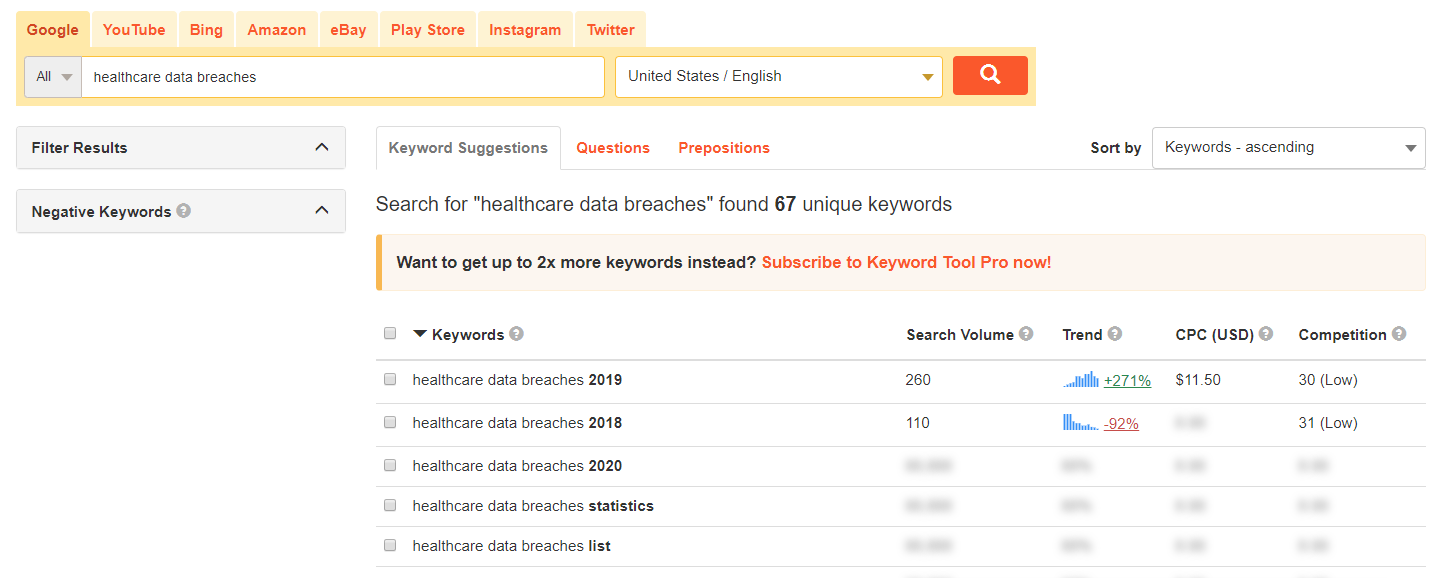

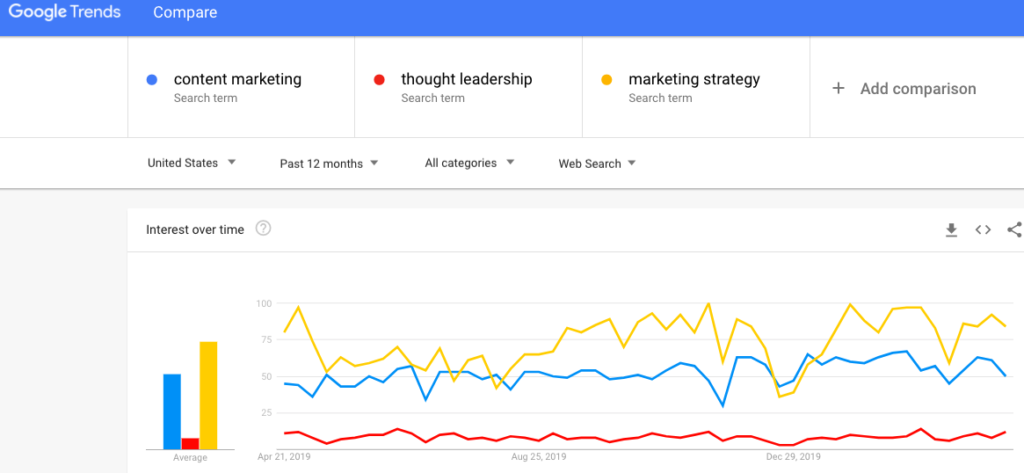
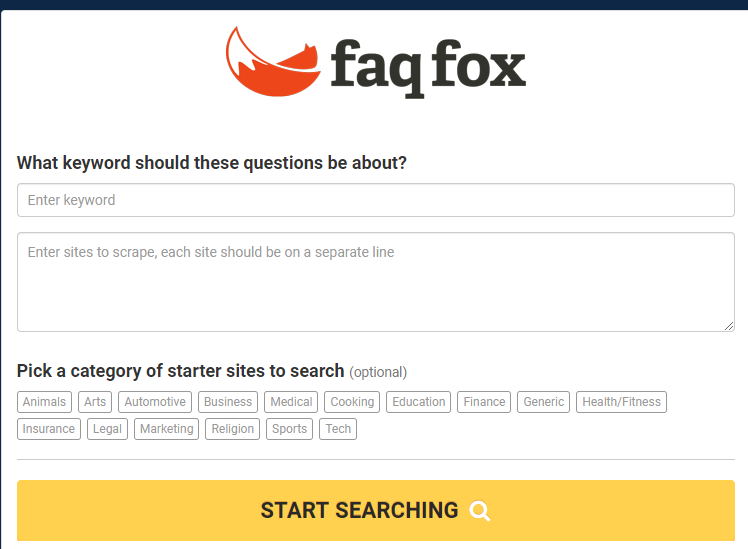
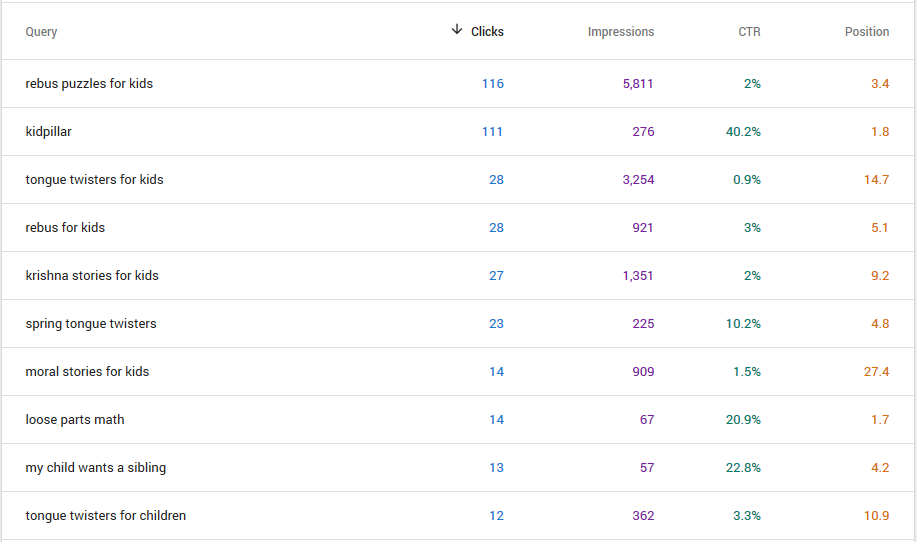





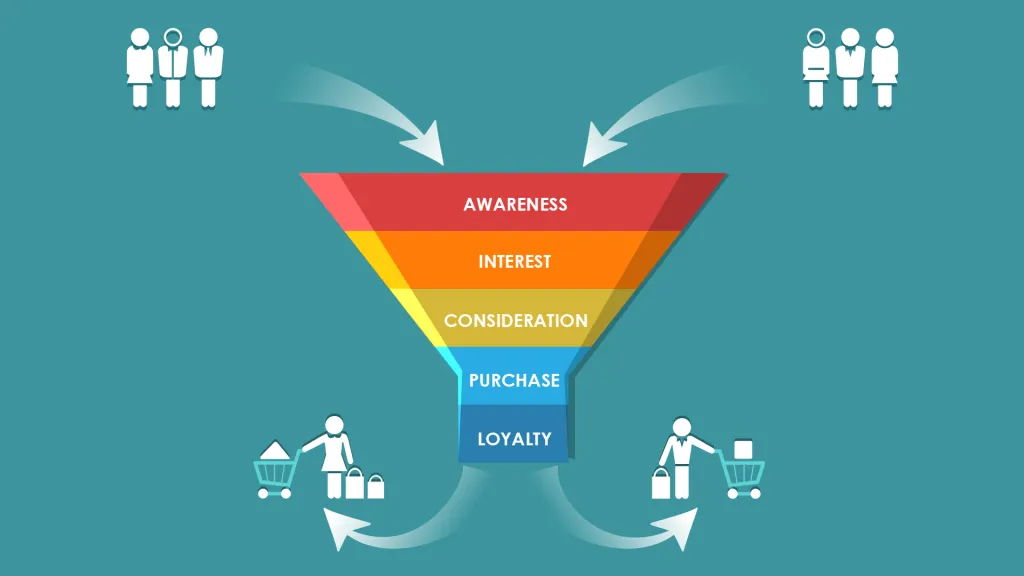

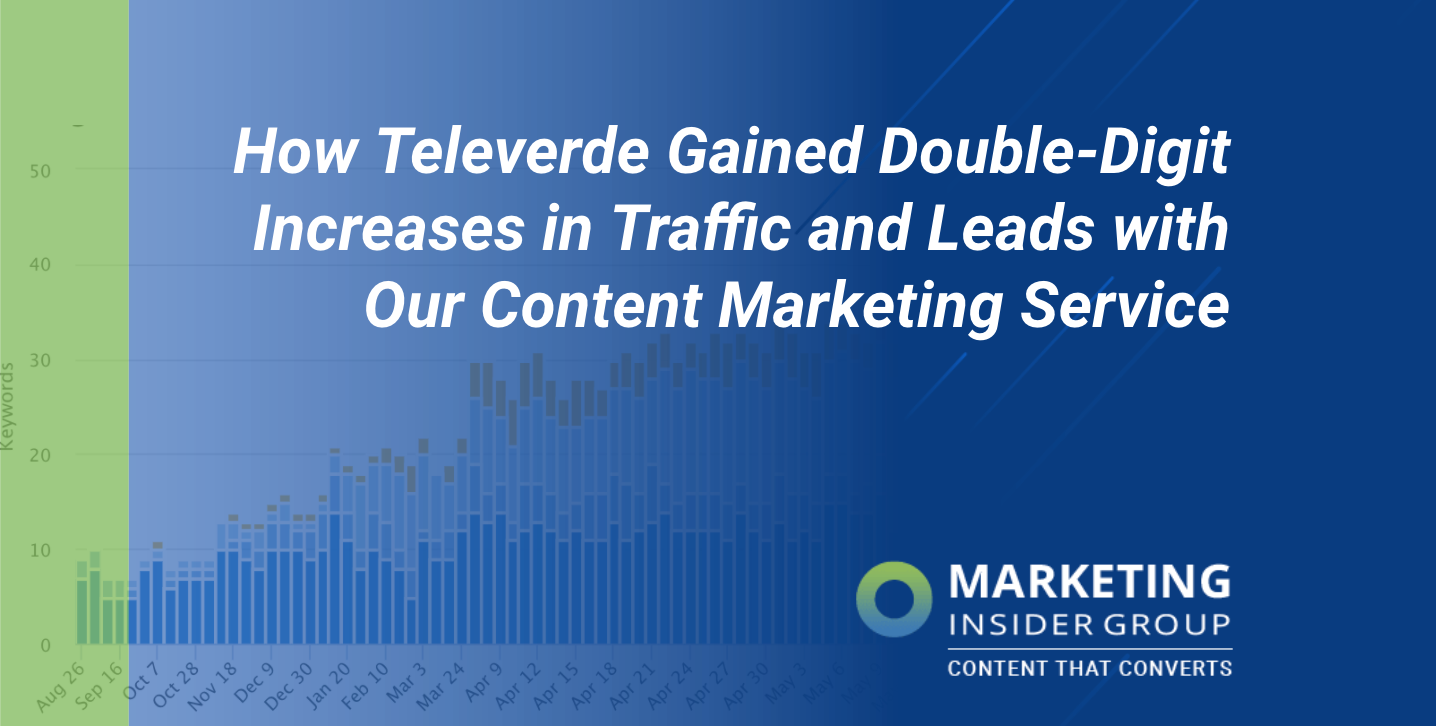
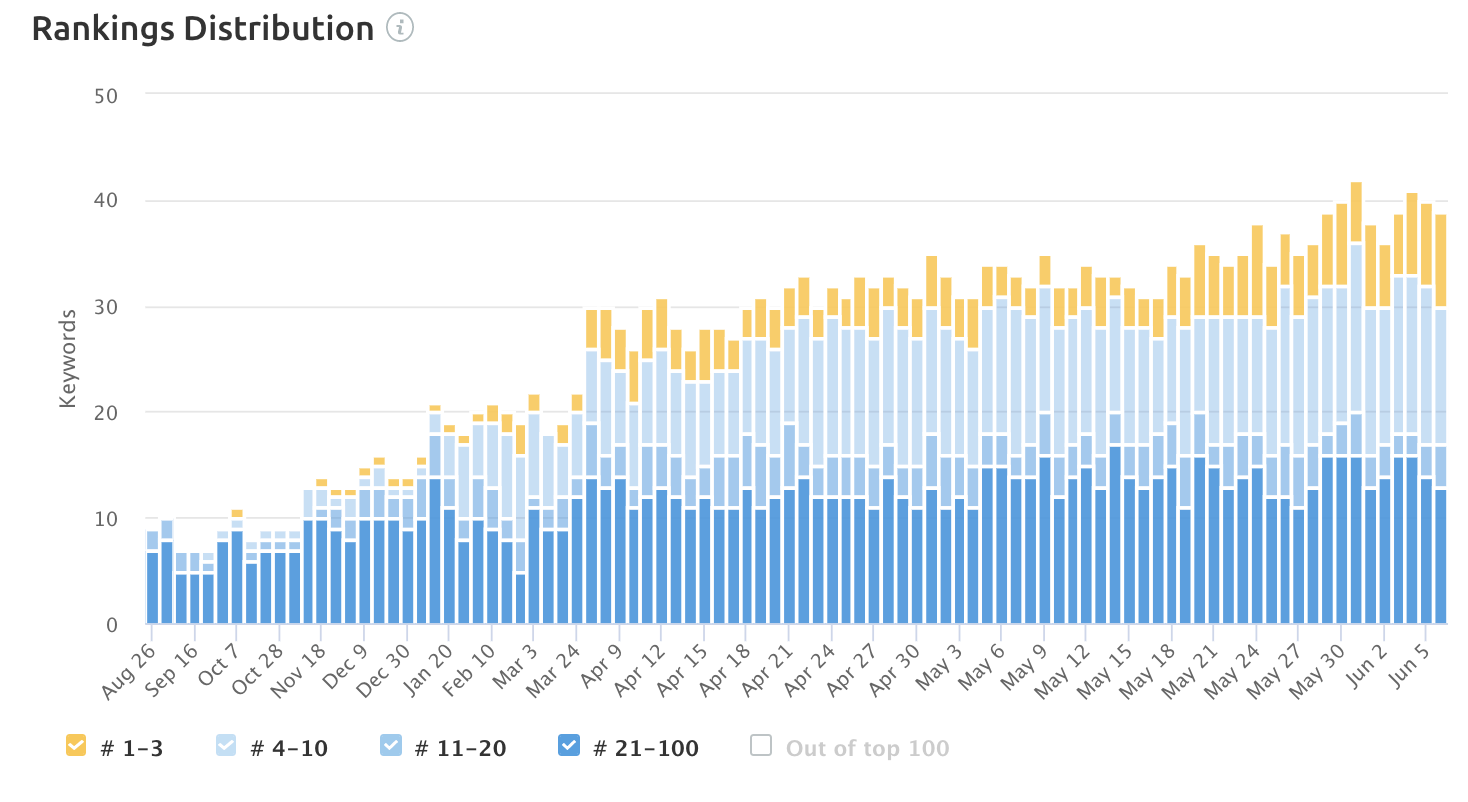
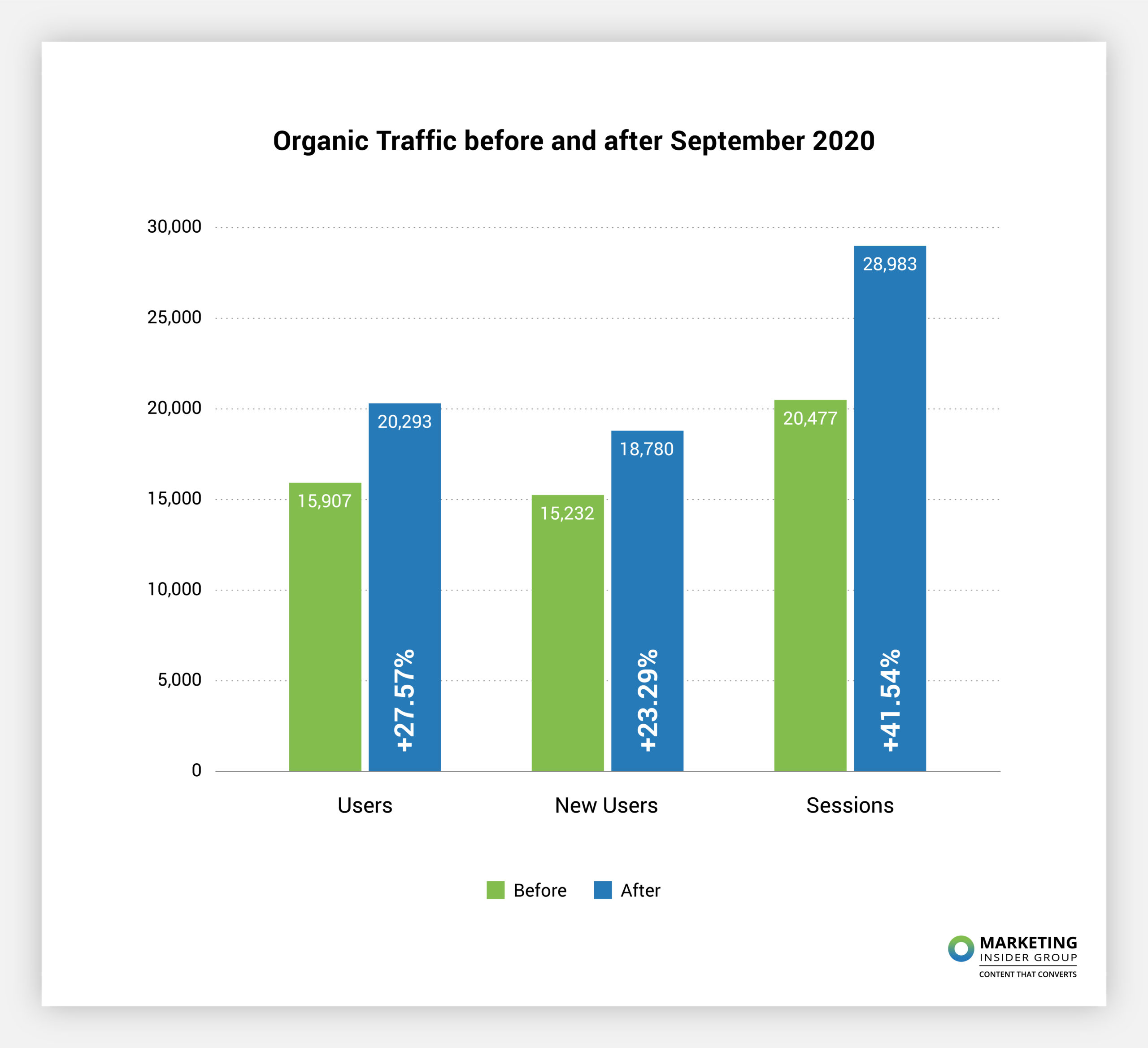
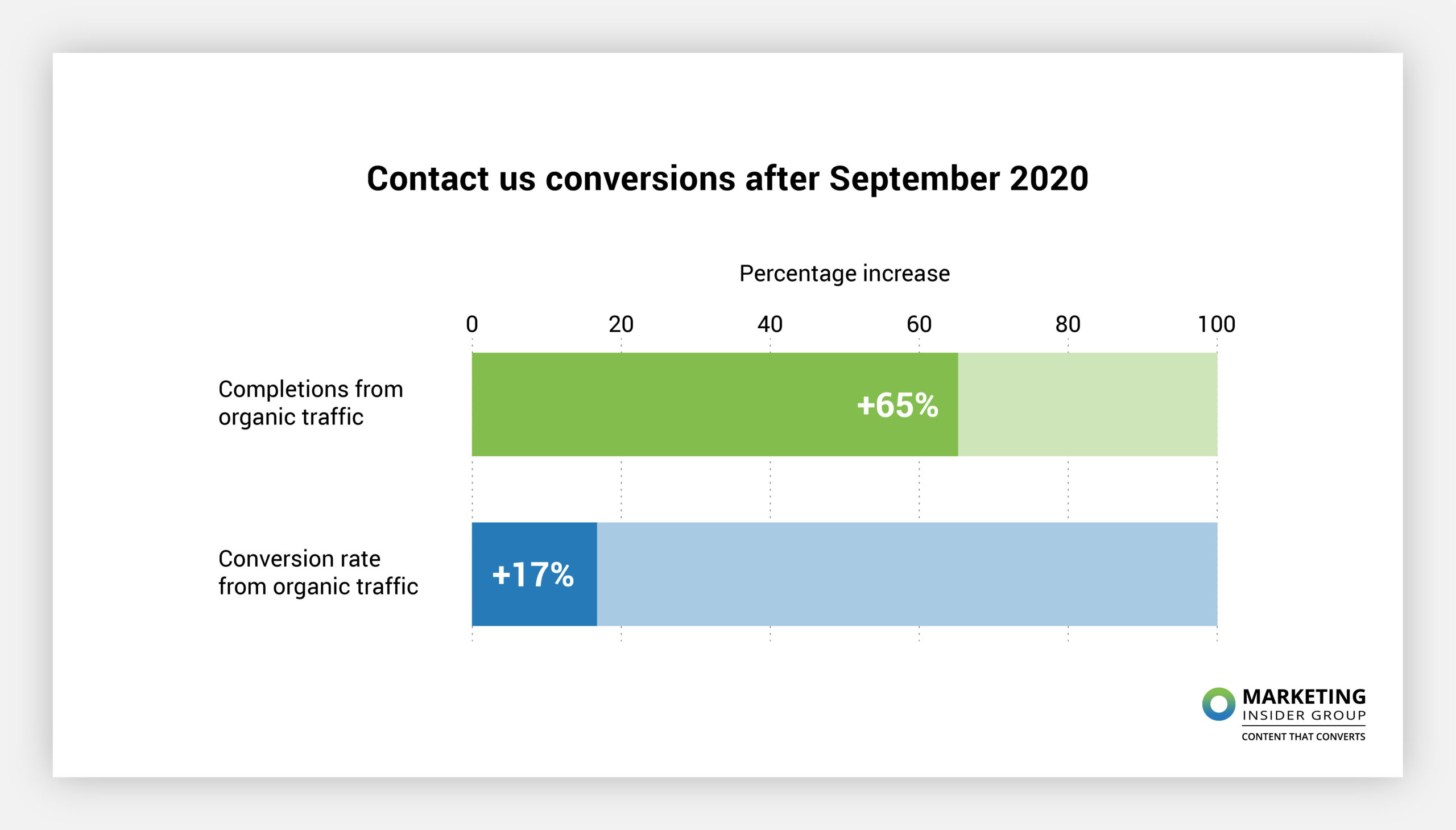
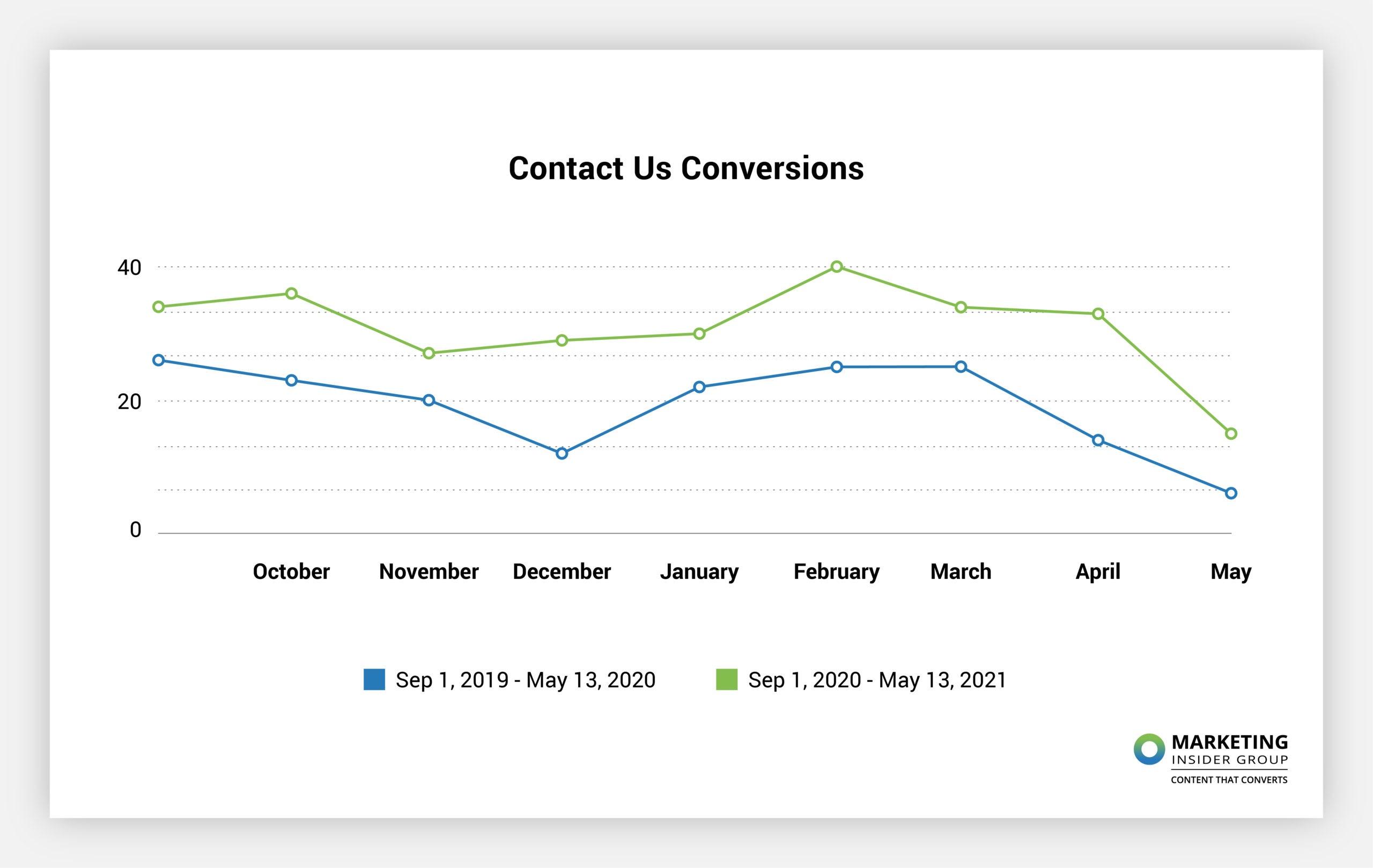 “We shifted our focus from the paid model to connecting with audiences and providing content they wanted, and it shows up in the numbers,” Chris reflected when we talked with him recently about Televerde’s success.
“We shifted our focus from the paid model to connecting with audiences and providing content they wanted, and it shows up in the numbers,” Chris reflected when we talked with him recently about Televerde’s success.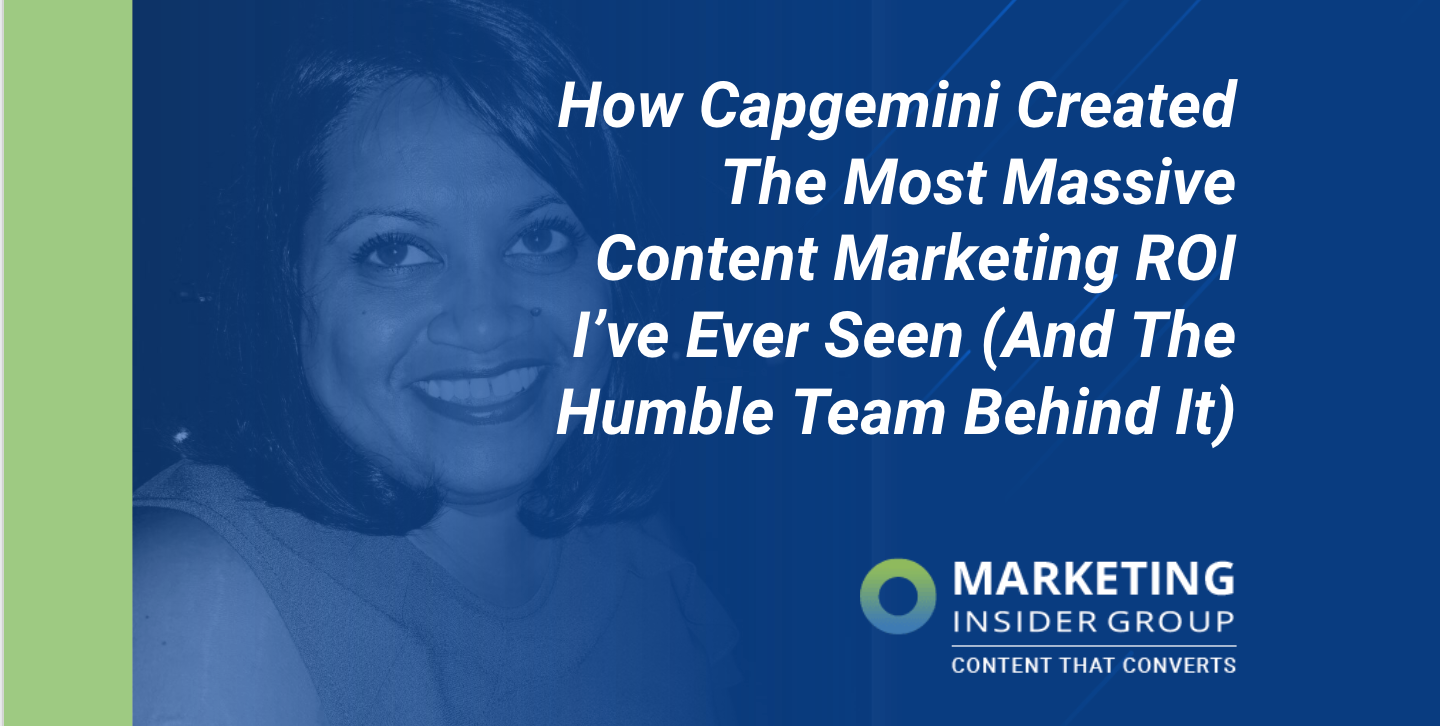
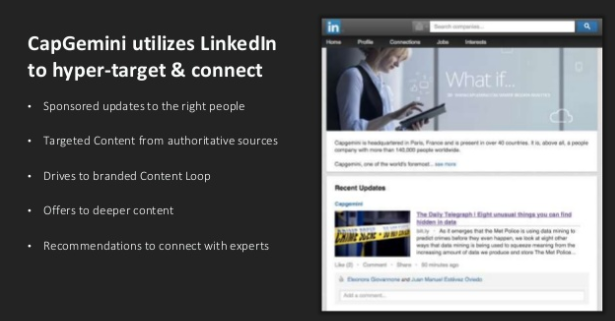

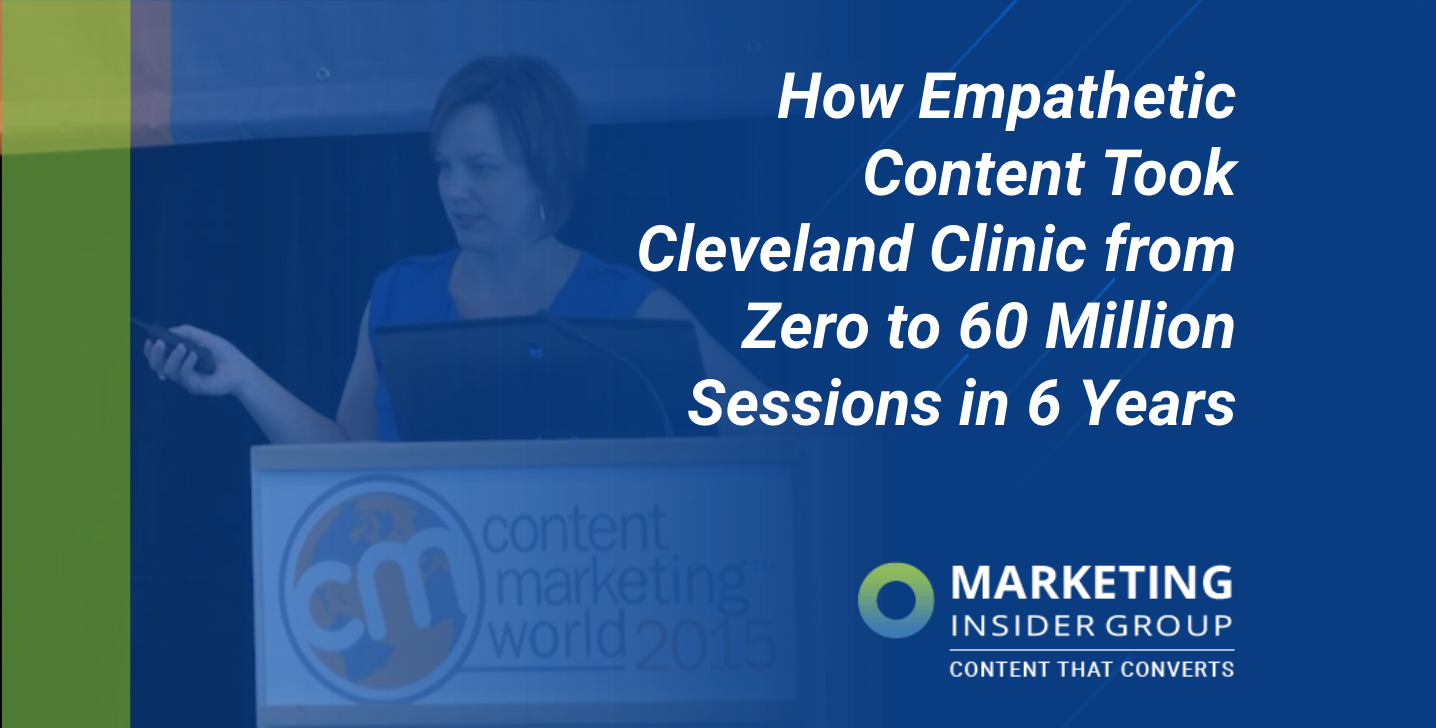


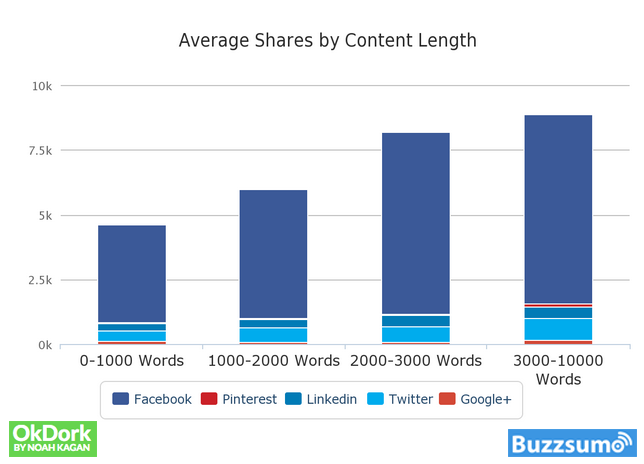
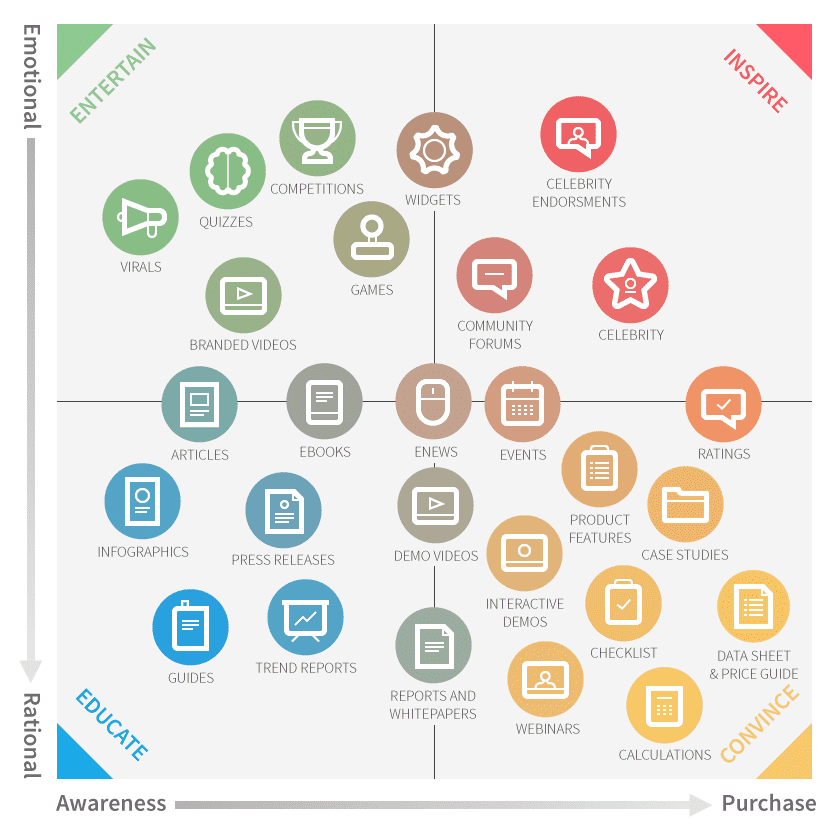
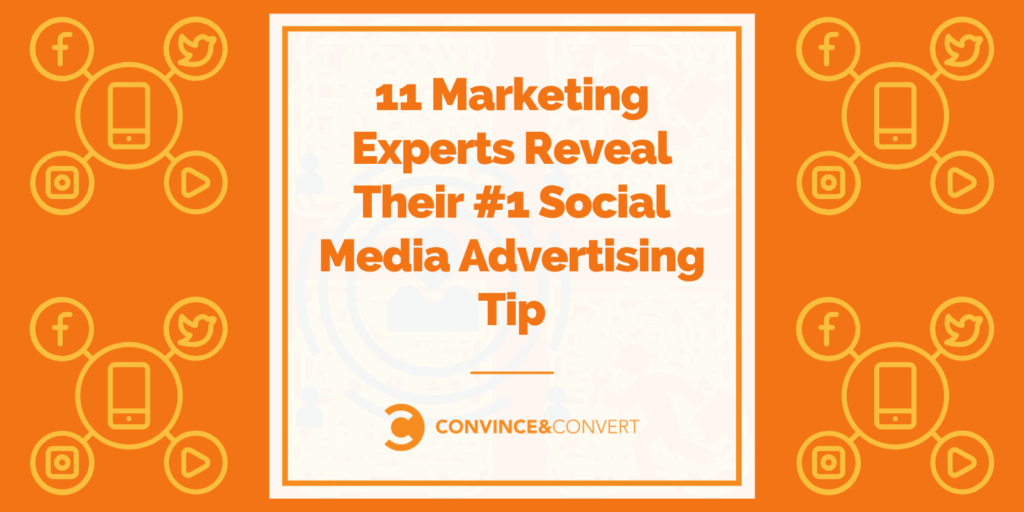
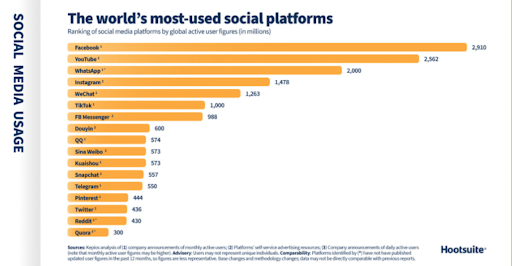
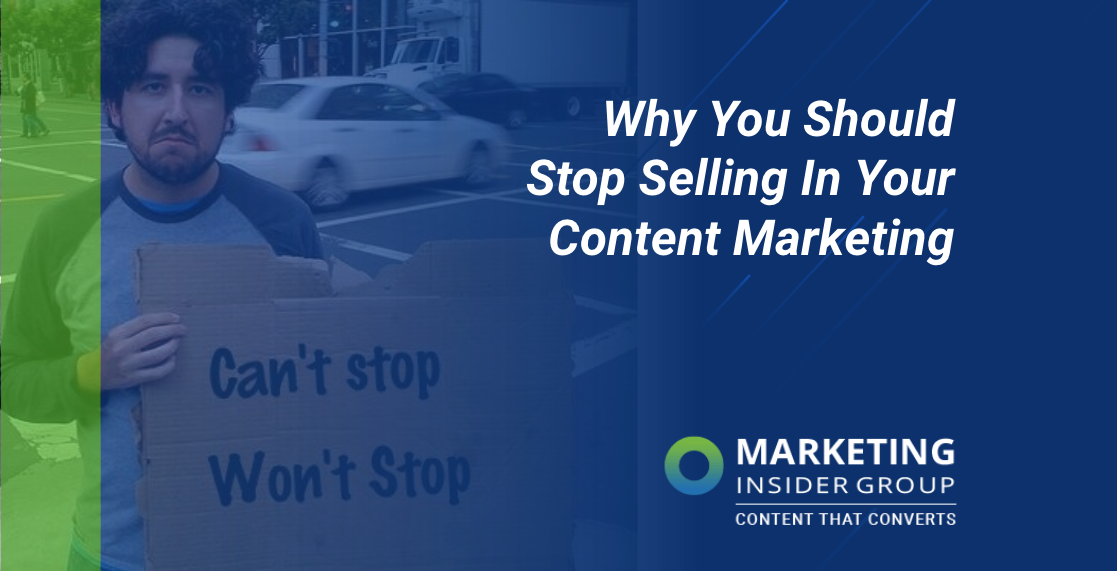
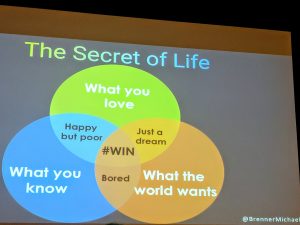 I have often said that content marketing is the overlap between what brands know and what buyers ask.
I have often said that content marketing is the overlap between what brands know and what buyers ask. Content today must compete with pictures of babies and kittens and puppies. If you want your content to be seen, read and shared, it has to be helpful, educational, or entertaining content.
Content today must compete with pictures of babies and kittens and puppies. If you want your content to be seen, read and shared, it has to be helpful, educational, or entertaining content.
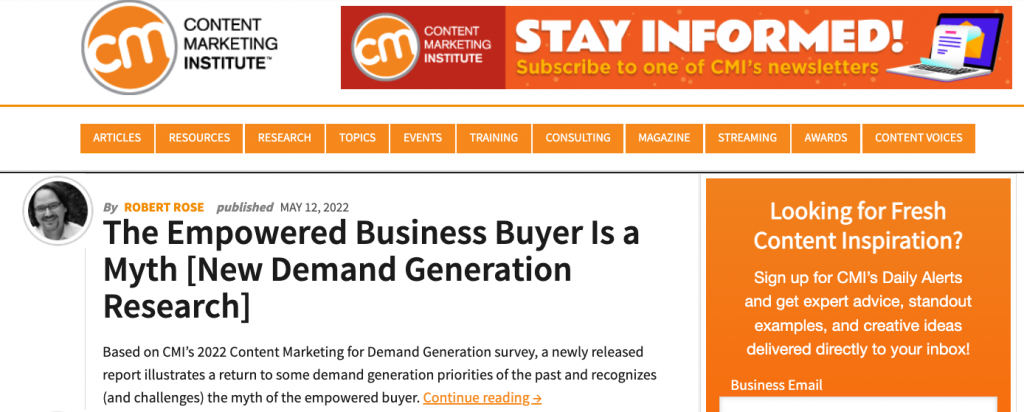
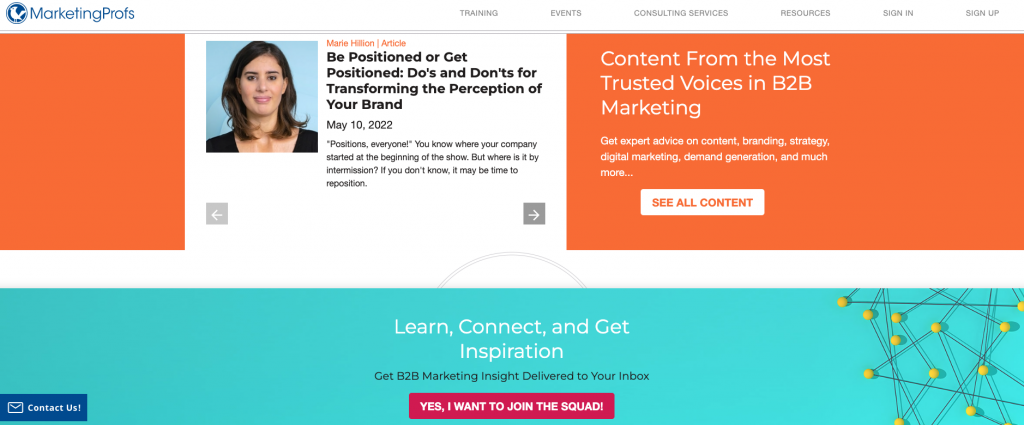 2. MarketingProfs (@MarketingProfs) – Led by their amazing Chief Content Officer @AnnHandley, this is one of the best resources covering the latest trends and thought leadership in marketing. If you only pick two sites, these are the two to read and share. Best article of the past year? 5 Steps to Prepare for First-Party Data By Jonathan Moran
2. MarketingProfs (@MarketingProfs) – Led by their amazing Chief Content Officer @AnnHandley, this is one of the best resources covering the latest trends and thought leadership in marketing. If you only pick two sites, these are the two to read and share. Best article of the past year? 5 Steps to Prepare for First-Party Data By Jonathan Moran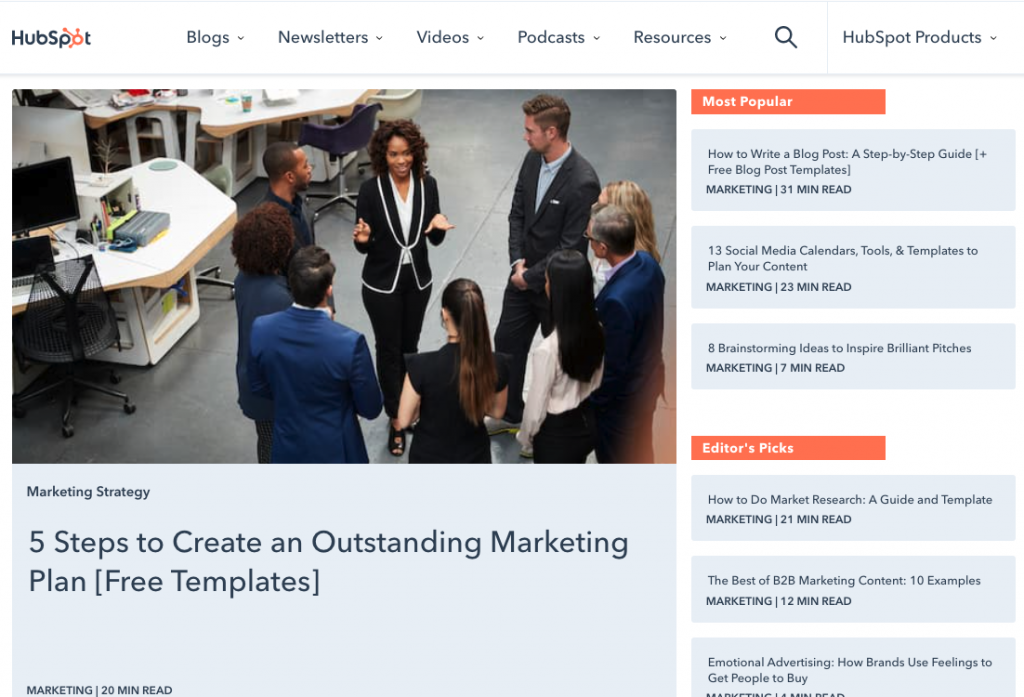 3. Hubspot (@Hubspot) – The top resource for inbound marketers. Hubspot has been one of the best content marketing examples to emulate right from the very beginning. Best article of the past year? Which
3. Hubspot (@Hubspot) – The top resource for inbound marketers. Hubspot has been one of the best content marketing examples to emulate right from the very beginning. Best article of the past year? Which 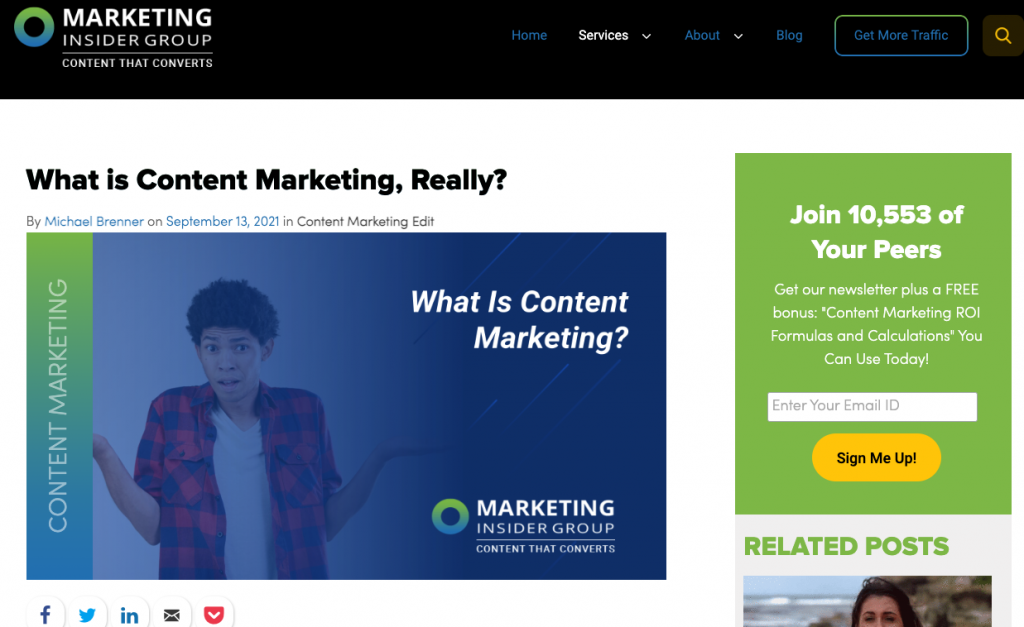 4. Marketing Insider Group (@MKTGInsiders) We are in fact the #4 most-read content marketing blog according to Rock Content and Feedspot. But I don’t want to be too presumptuous. You be the judge. My top posts of the last year are Google Makes It Official: Content Marketing Is Now the #1 Ranking Factor, How to Make a Content Calendar You’ll Actually Use, Why
4. Marketing Insider Group (@MKTGInsiders) We are in fact the #4 most-read content marketing blog according to Rock Content and Feedspot. But I don’t want to be too presumptuous. You be the judge. My top posts of the last year are Google Makes It Official: Content Marketing Is Now the #1 Ranking Factor, How to Make a Content Calendar You’ll Actually Use, Why 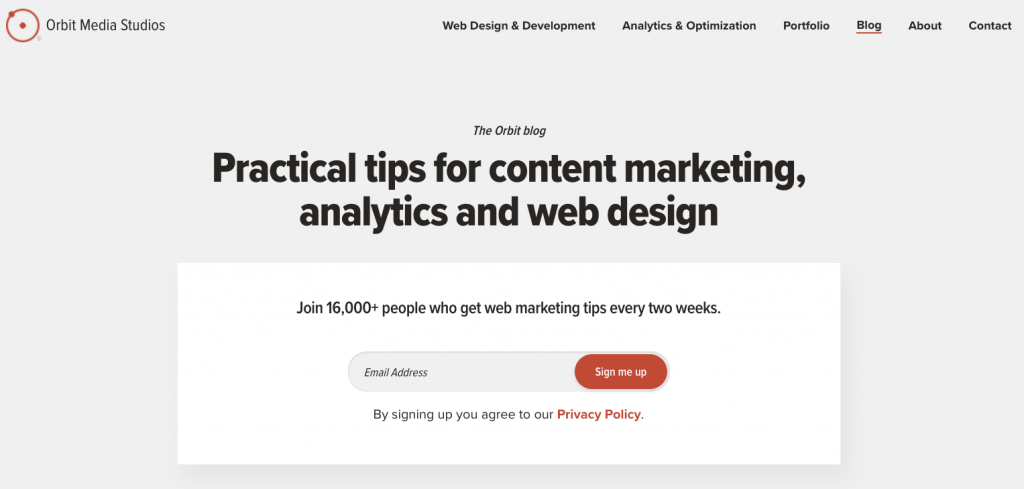
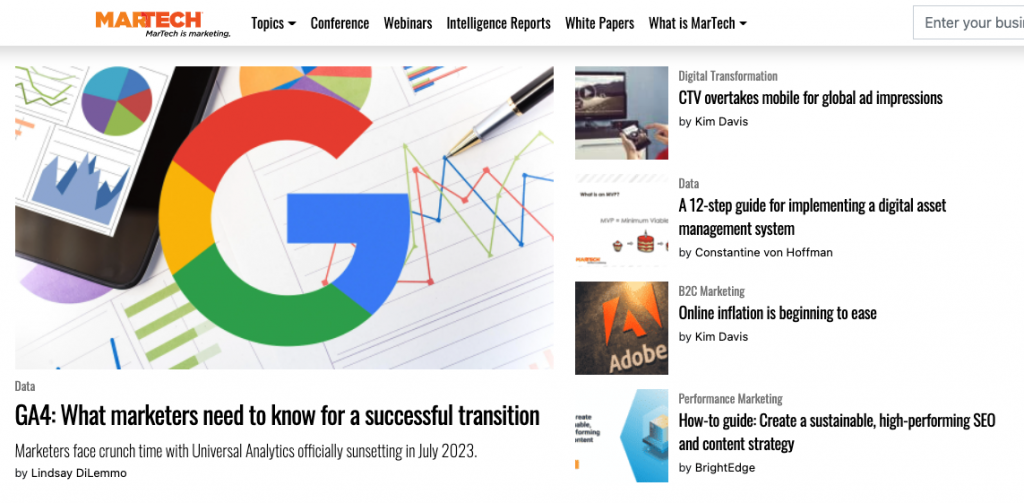 6. MarTech shares content and experiences that educate, engage and support you in your daily mission as a professional working at the intersection of marketing and technology. Best article in the last year: Getting back to basics: Marketing ROI. Oh I really like that one
6. MarTech shares content and experiences that educate, engage and support you in your daily mission as a professional working at the intersection of marketing and technology. Best article in the last year: Getting back to basics: Marketing ROI. Oh I really like that one 
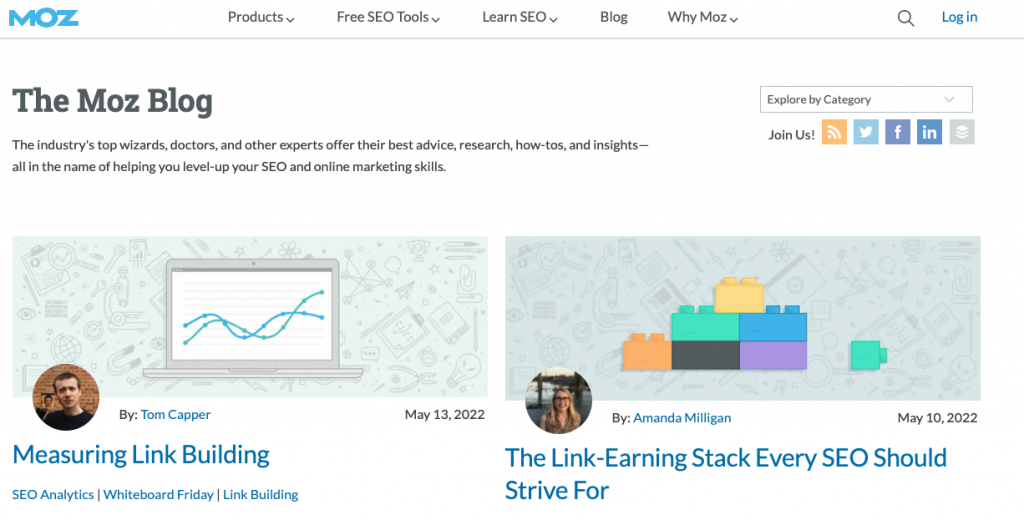 7. Moz (@Moz) is he industry’s top wizards, doctors, and other experts offer their best advice, research, how-tos, and insights—all in the name of helping you level-up your SEO and online marketing skills. Best article in the last year: 22 Smart Google SEO Tips for 2022.
7. Moz (@Moz) is he industry’s top wizards, doctors, and other experts offer their best advice, research, how-tos, and insights—all in the name of helping you level-up your SEO and online marketing skills. Best article in the last year: 22 Smart Google SEO Tips for 2022.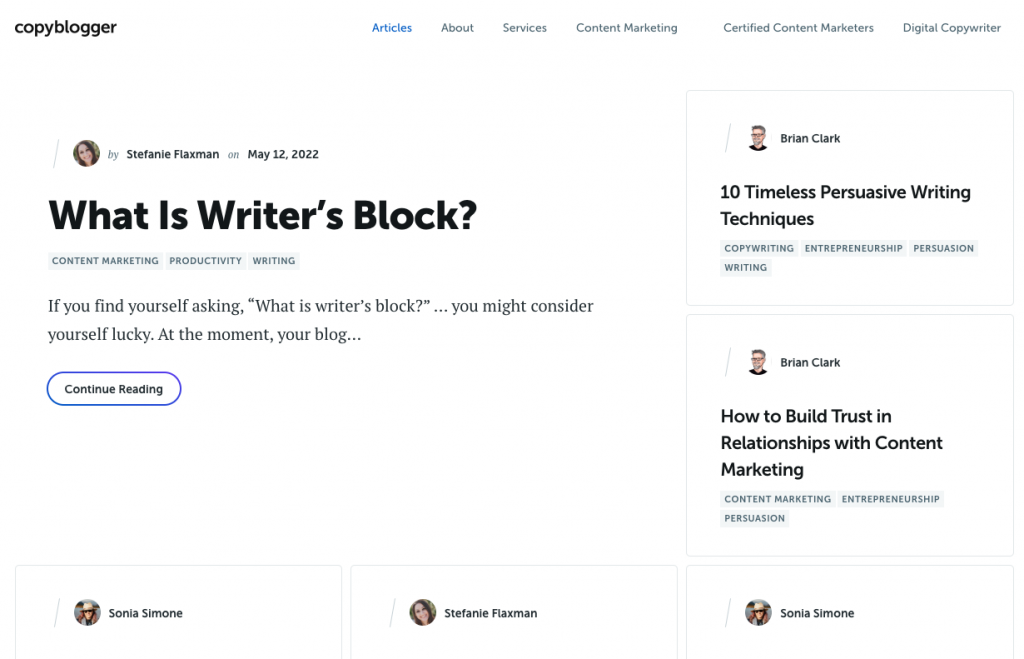 8. Copyblogger (@Copyblogger) “Since January 2006, Copyblogger has been teaching people how to create killer online content. Not bland corporate crap created to fill up a company webpage. Valuable information that attracts attention, drives traffic, and builds your business.” How to Write a Good
8. Copyblogger (@Copyblogger) “Since January 2006, Copyblogger has been teaching people how to create killer online content. Not bland corporate crap created to fill up a company webpage. Valuable information that attracts attention, drives traffic, and builds your business.” How to Write a Good 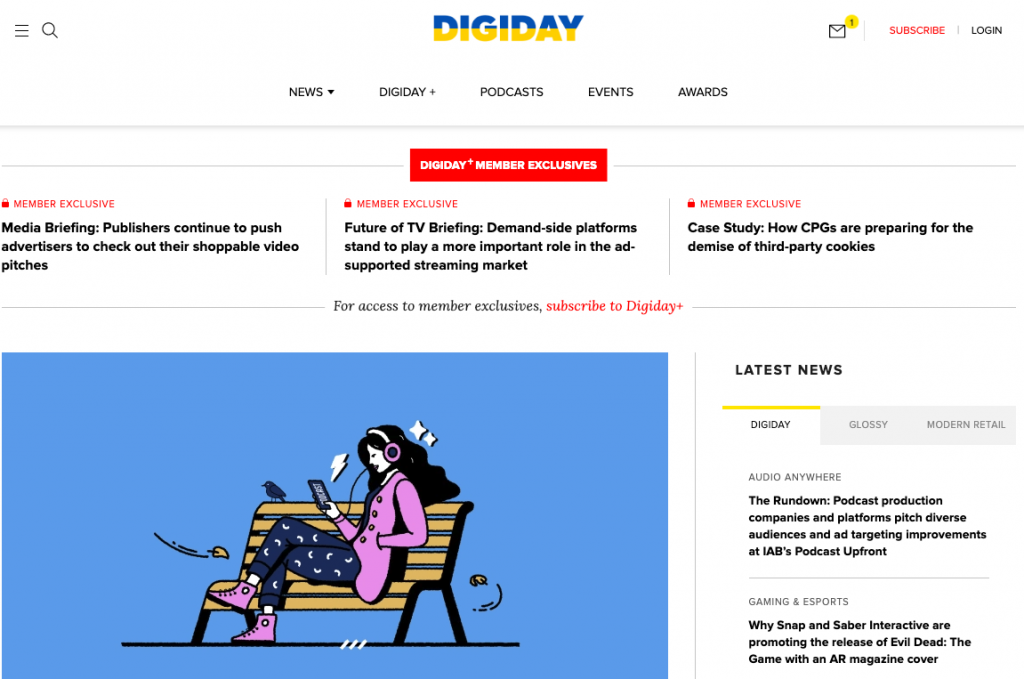 9. Digiday (@Digiday) Provides news and analysis to stay ahead of the trends transforming media and marketing. Their top post in the past year: Facebook collecting people’s data even when accounts are deactivated
9. Digiday (@Digiday) Provides news and analysis to stay ahead of the trends transforming media and marketing. Their top post in the past year: Facebook collecting people’s data even when accounts are deactivated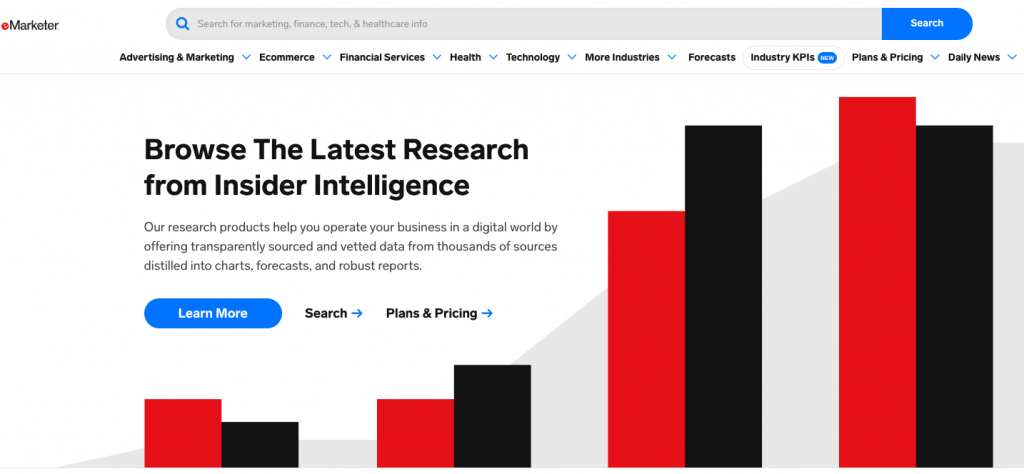 10. eMarketer (@eMarketer) is a great marketer resource for stats. Hers’s their top article of the past year: TikTok to surpass YouTube in US.
10. eMarketer (@eMarketer) is a great marketer resource for stats. Hers’s their top article of the past year: TikTok to surpass YouTube in US.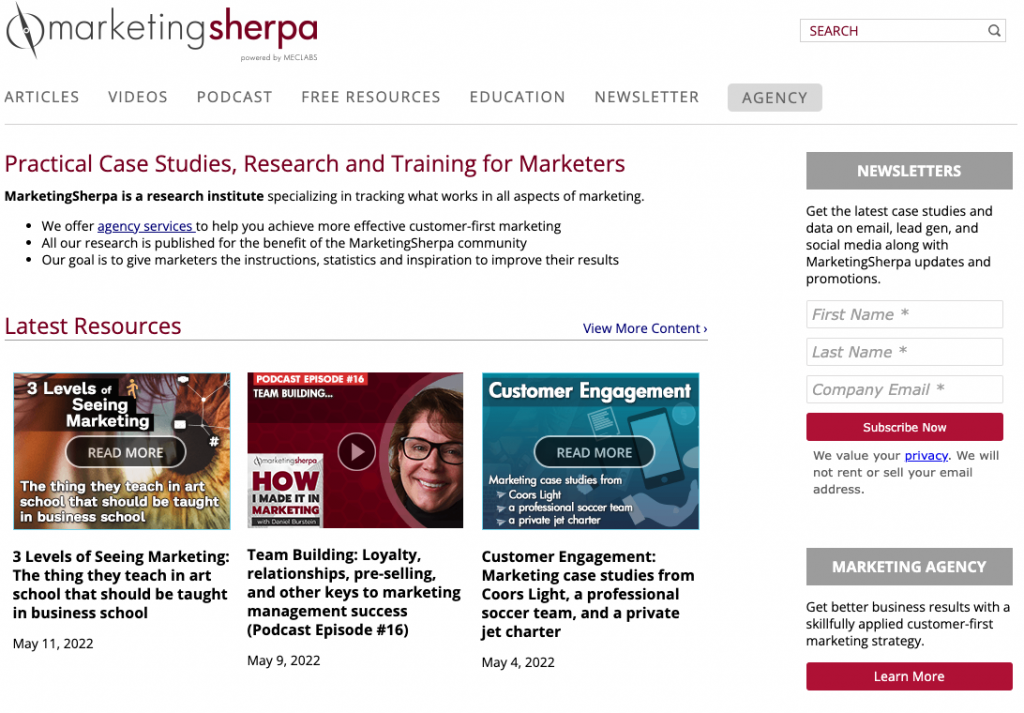 11. MarketingSherpa (@MarketingSherpa) provides research reports and blogs on marketing. And their top article of the past year is Marketing 101: What is digital marketing?
11. MarketingSherpa (@MarketingSherpa) provides research reports and blogs on marketing. And their top article of the past year is Marketing 101: What is digital marketing?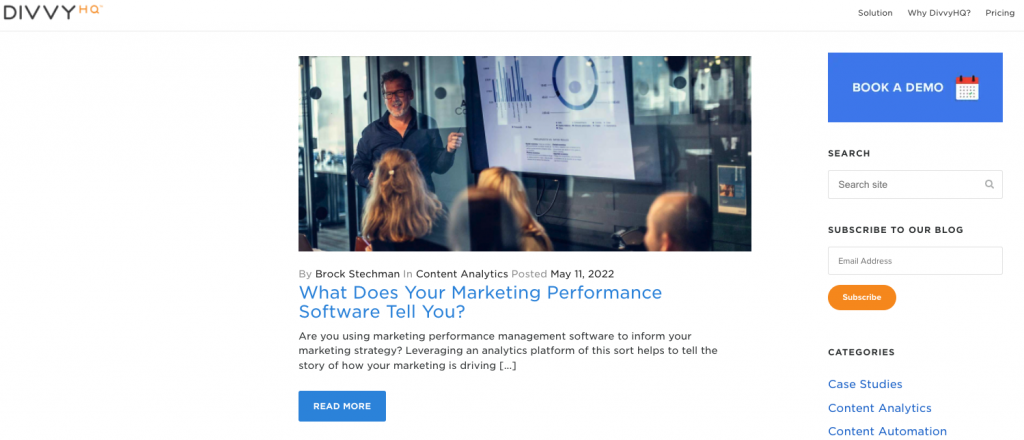 12. DivvyHQ (DivvyHQ) is a leading content marketing platform for planning, creating, sharing, and analyzing your content efforts across the enterprise. In fact, we use them here at MIG to manage all our clients content! Their top post from the past year is How to Increase Your Site Authority with Every Piece of Content You Add by their co-founder Brody Dorland.
12. DivvyHQ (DivvyHQ) is a leading content marketing platform for planning, creating, sharing, and analyzing your content efforts across the enterprise. In fact, we use them here at MIG to manage all our clients content! Their top post from the past year is How to Increase Your Site Authority with Every Piece of Content You Add by their co-founder Brody Dorland.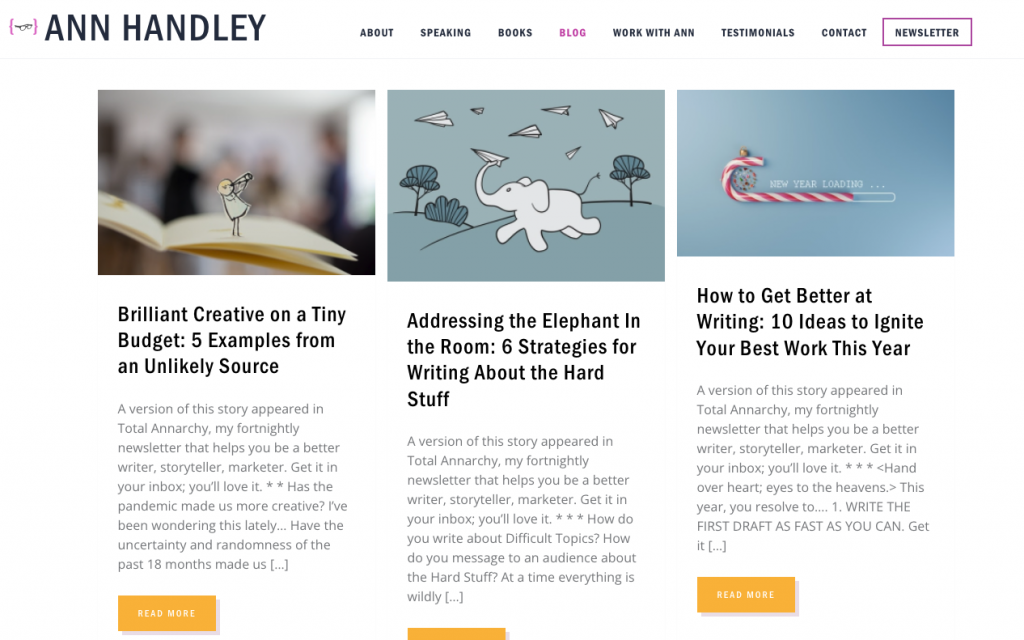 13. Ann Handley’s Blog (@AnnHandley) Ann Handley is a lovely writer, a digital marketing pioneer, and Wall Street Journal best-selling author who truly inspires people to create marketing that your customers will love, igniting real results for your business. Her best post in the past 12 months is Public Speaking for Introverts (And Those Who Forget How to Be Around People).
13. Ann Handley’s Blog (@AnnHandley) Ann Handley is a lovely writer, a digital marketing pioneer, and Wall Street Journal best-selling author who truly inspires people to create marketing that your customers will love, igniting real results for your business. Her best post in the past 12 months is Public Speaking for Introverts (And Those Who Forget How to Be Around People).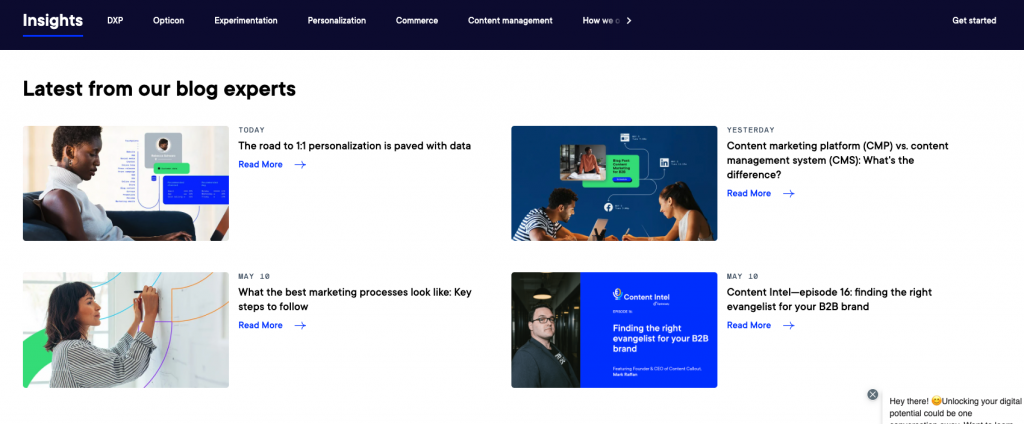 14. Optimizely Creating digital experiences that transform your company takes data-driven decisions, continued experimentation and constant invention. Optimizely Digital Experience Platform helps you unlock your digital potential and their blog supports content and digital experience management. Their top post this past year is The smart CMO’s guide to building a marketing analytics tool stack.
14. Optimizely Creating digital experiences that transform your company takes data-driven decisions, continued experimentation and constant invention. Optimizely Digital Experience Platform helps you unlock your digital potential and their blog supports content and digital experience management. Their top post this past year is The smart CMO’s guide to building a marketing analytics tool stack.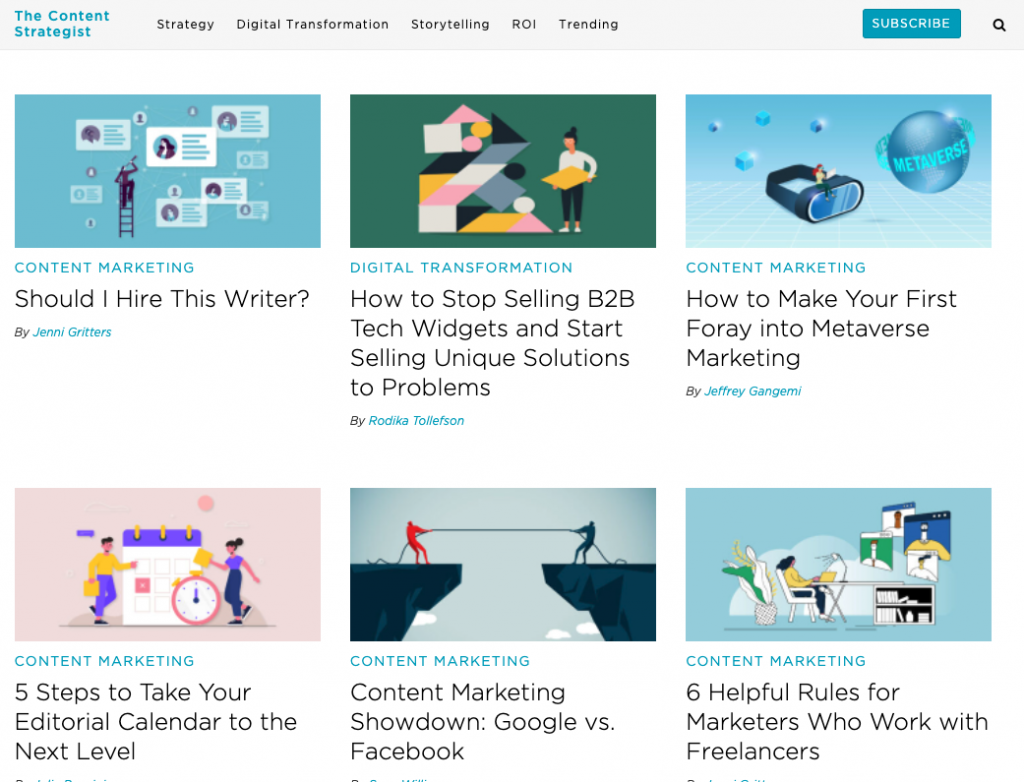 15. Content Strategist this blog by one of the original content tech platforms has been sharing content marketing advice for some time. Their top article is Brand Voice Study: Should Your Content Be Authoritative or Agreeable?
15. Content Strategist this blog by one of the original content tech platforms has been sharing content marketing advice for some time. Their top article is Brand Voice Study: Should Your Content Be Authoritative or Agreeable?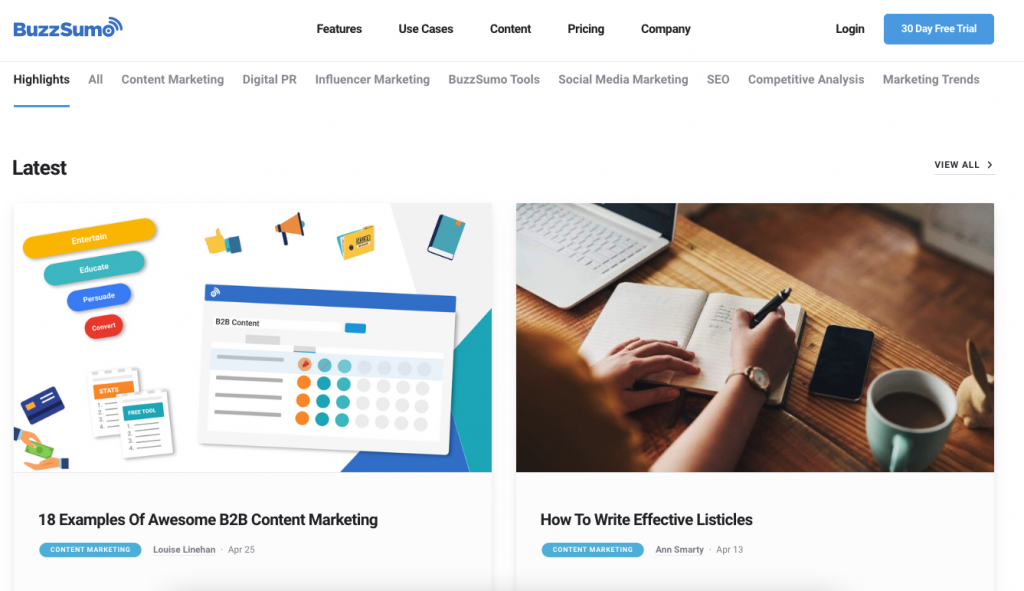 16. Buzzsumo Blog is awesome in that they use their own platform to deliver content marketing insights like this top post from the past year: The Top 100 Content Marketers You Need To Follow Right Now. Also thanks to them for giving me the tool to find each site’s top content!
16. Buzzsumo Blog is awesome in that they use their own platform to deliver content marketing insights like this top post from the past year: The Top 100 Content Marketers You Need To Follow Right Now. Also thanks to them for giving me the tool to find each site’s top content!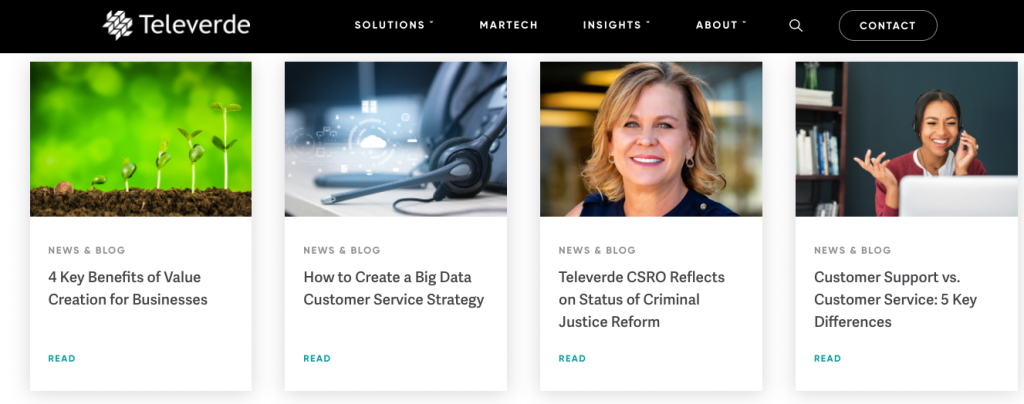 17. Televerde is an integrated sales, marketing and customer care solutions organization that delivers pipeline, revenue as a service, and customer experience expertise with a human touch, best-in-class technology, and an operating model that is resilient to shifting market condition. Their top article is How a Strong B2B Brand Purpose Wins Customers (And Hearts)
17. Televerde is an integrated sales, marketing and customer care solutions organization that delivers pipeline, revenue as a service, and customer experience expertise with a human touch, best-in-class technology, and an operating model that is resilient to shifting market condition. Their top article is How a Strong B2B Brand Purpose Wins Customers (And Hearts)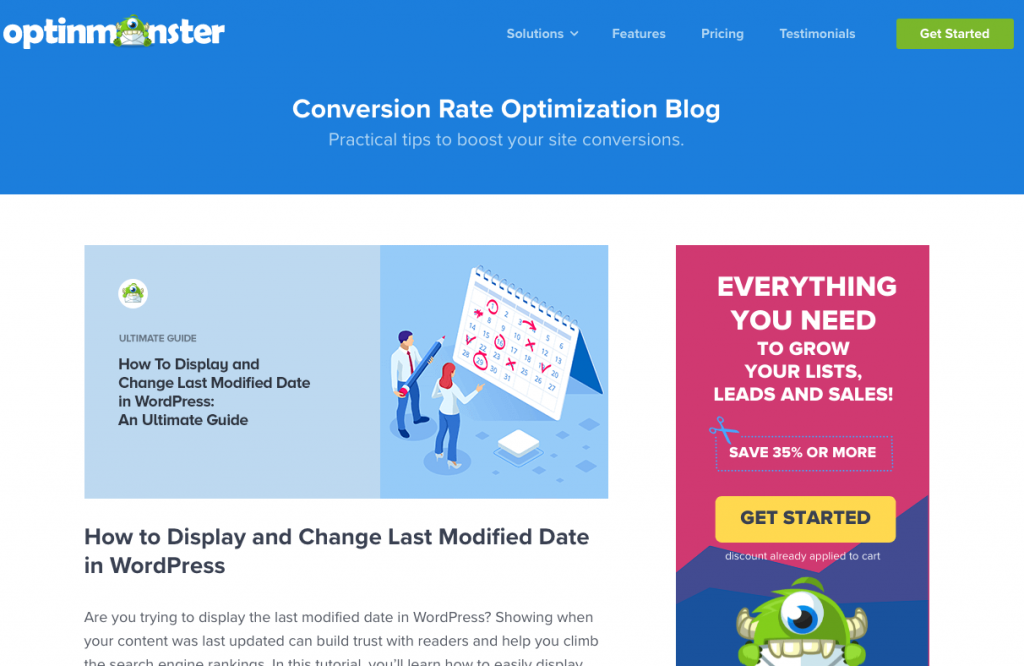 18.Optin Monster writes about my favorite topic after content marketing: conversion! Here is one of their top content marketing posts: How to Write a Great Headline That Drives Clicks -Step by Step
18.Optin Monster writes about my favorite topic after content marketing: conversion! Here is one of their top content marketing posts: How to Write a Great Headline That Drives Clicks -Step by Step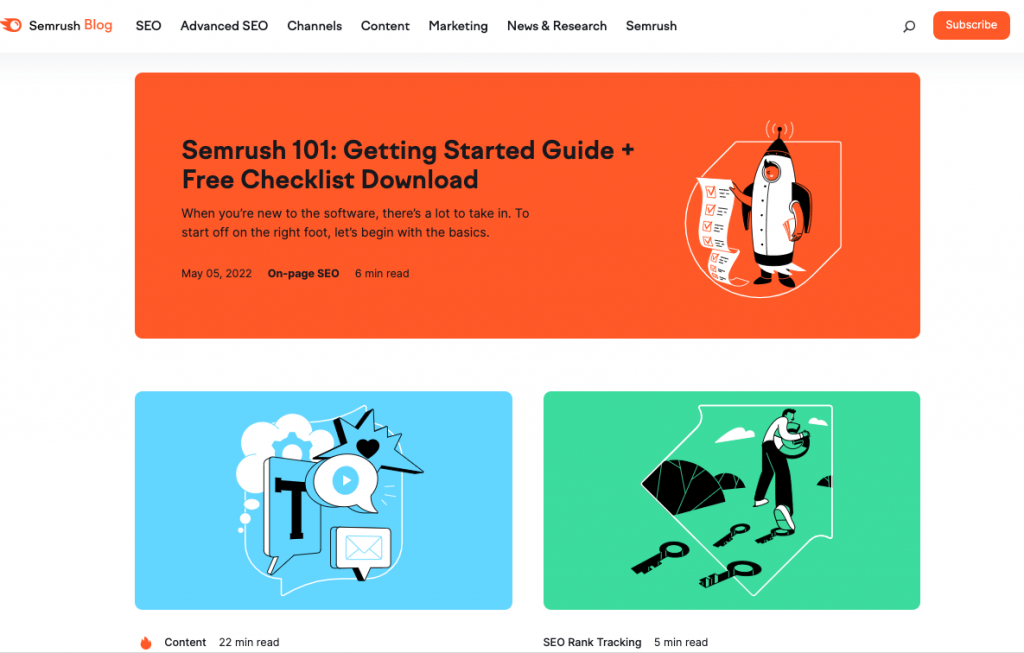 19. Semrush is another tool we use here at MIG every day as I am checking on our client’s search rankings and results to make sure we give them the best content. Here is Semrush’s best piece of content in the past year: The Anatomy of Top-Performing Organic Content in 2022
19. Semrush is another tool we use here at MIG every day as I am checking on our client’s search rankings and results to make sure we give them the best content. Here is Semrush’s best piece of content in the past year: The Anatomy of Top-Performing Organic Content in 2022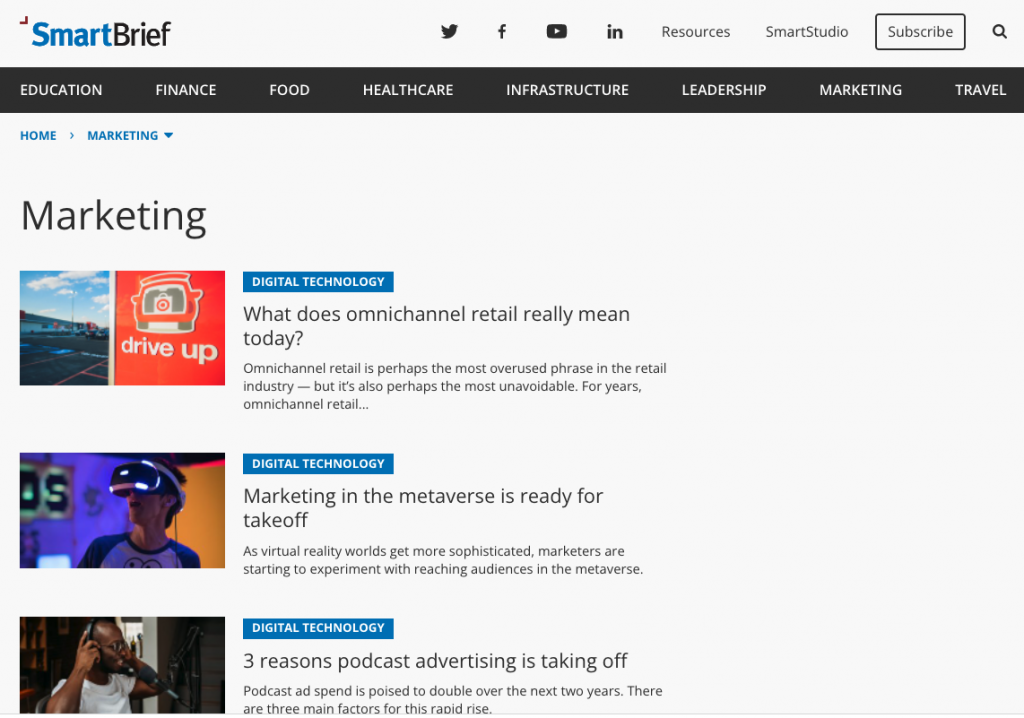 20. SmartBrief on Marketing does a great job at curating the latest news on content marketing related articles from all over the web. Their top piece of content is Top Career Advice from Marketing Leaders
20. SmartBrief on Marketing does a great job at curating the latest news on content marketing related articles from all over the web. Their top piece of content is Top Career Advice from Marketing Leaders